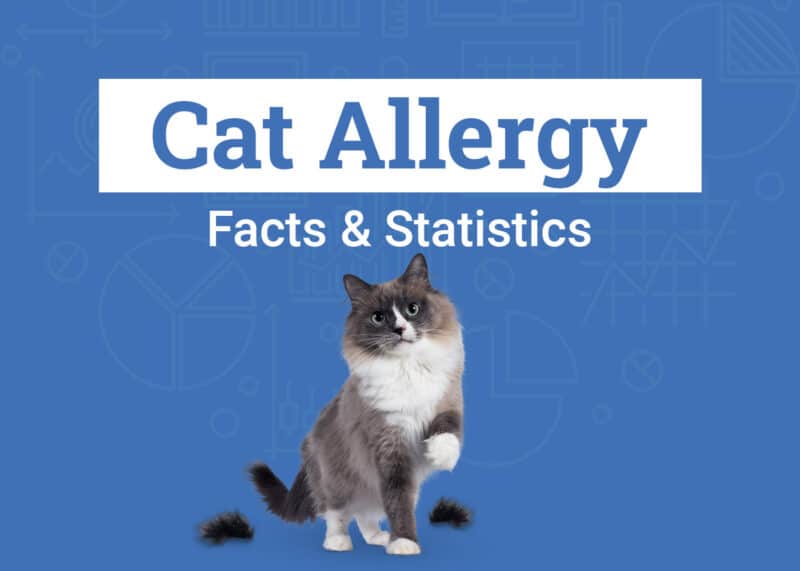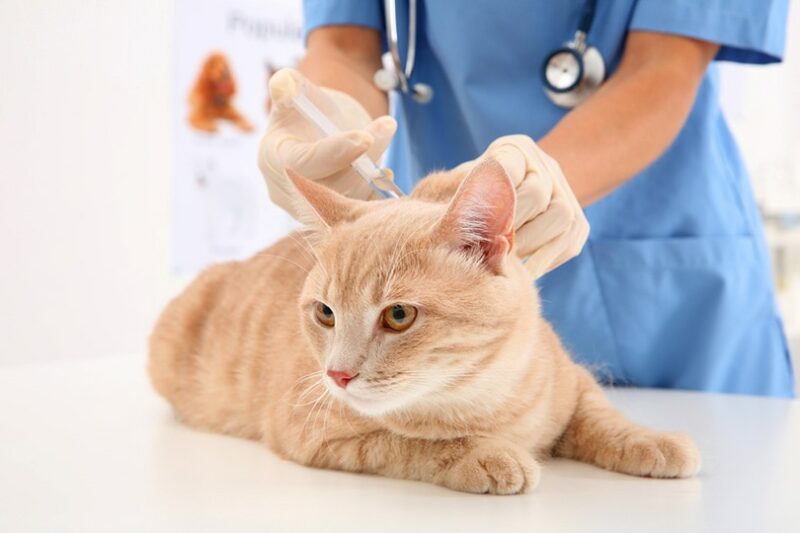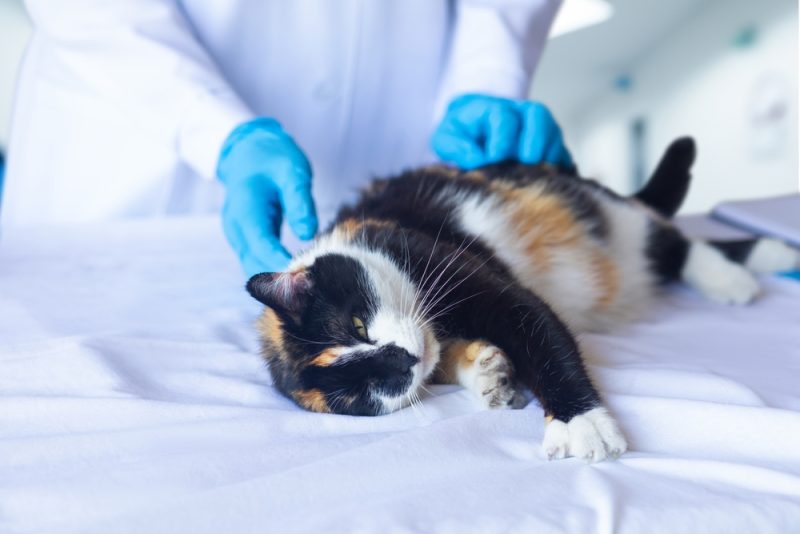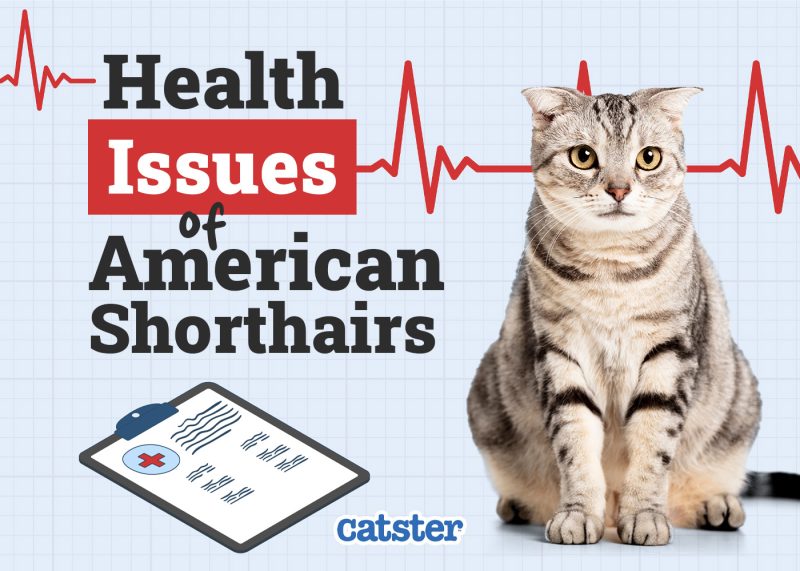In this article
View 3 More +Note: This article’s statistics come from third-party sources and do not represent the opinions of this website.
Cat allergies, and pet allergies in general, are among the most common forms of allergy. They can cause symptoms including a runny nose and coughing, wheezing, difficulty breathing, and rashes. They can also exacerbate existing conditions such as asthma, and while some cats are described as hypoallergenic, all cats produce the protein Fel d1, which is actually the cause of allergic reactions, rather than the fur or hair of the cat.
Although exact figures are unclear, it is estimated that 10% of people in the US have pet allergies, with cat allergies being twice as common as dog allergies, and while these figures do vary around the world, it is believed that between 10% and 20% of the global population suffer some form of pet allergy.

Top 13 Cat Allergy Statistics
- 1 in 10 people in the US have pet allergies.
- Pet allergies affect between 10% and 20% of the global population.
- Pet allergy rates are increasing.
- Allergic rhinitis affects more than a third of the population in Korea.
- Cat allergies are twice as common as dog allergies.
- 35% of US households own at least one cat.
- People aren’t actually allergic to cat fur.
- Cats can indirectly cause a flare-up of allergies to pollen, mold, and other allergens.
- There is no such thing as a truly hypoallergenic cat or dog.
- Non-neutered males produce more Fel d1 than other cats.
- Allergic symptoms include coughing, sneezing, itchy eyes, and rashes.
- Children with pets are less likely to grow up allergic than those with no pets.
- The longhaired Siberian cat is actually considered one of the better breeds for allergy sufferers.
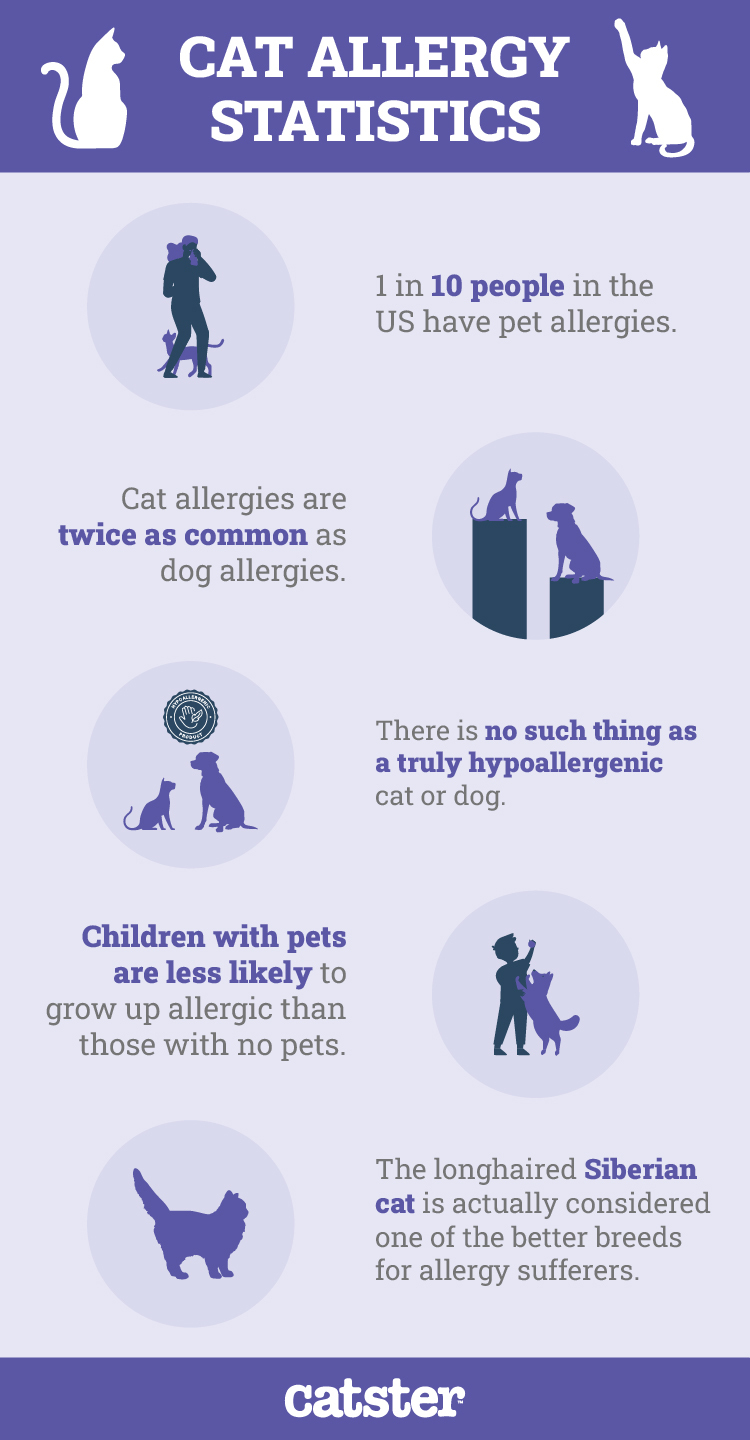

Allergy Sufferers
1. 1 in 10 people in the US have pet allergies.
(WebMD)
The exact number of people with cat allergies is unknown. Many people suffer mildly and never report reactions, while some people who do not live with or come into regular contact with cats may not recognize that they have an allergy. However, it is estimated that approximately 1 in 10 people in the US alone have pet allergies, including to cats and dogs. More people suffer from cat allergies because the protein that causes the allergic reaction is so small that it hangs in the air and can remain in the local atmosphere much longer than the allergy-causing protein from dogs. This means that it is more easily breathed into the lungs, causing the immune system to misidentify it as a threat.
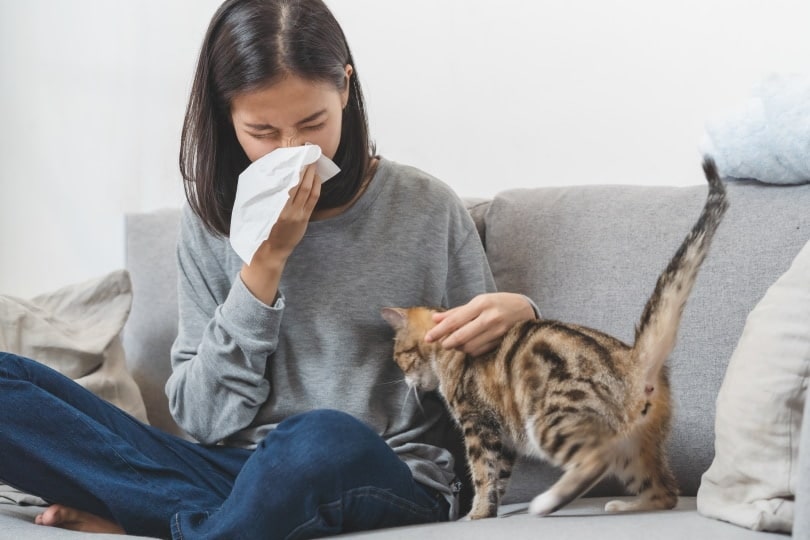
2. Pet allergies affect between 10% and 20% of the global population.
(NCBI)
Globally, the number of people who suffer from allergies is around the same, or slightly higher, as it is in the US. Again, figures are difficult to determine with any precision, but it is believed that between 10% and 20% of the global population suffers from pet allergies.
3. Pet allergy rates are increasing.
(NCBI)
It is estimated that allergic rhinitis costs the United States nearly $600 per employee per year in lost productivity, and pet allergies are the most common cause of lost productivity. Unfortunately, the figure is only likely to increase because new medications and treatments are not emerging as quickly as the rate of allergy prevalence.

4. Allergic rhinitis affects more than a third of the population in Korea.
(NCBI)
Allergic reactions occur when the immune system mistakenly identifies some element as being a threat to the body. It attempts to fight the allergen with common symptoms, including coughing and wheezing. Allergic rhinitis is when the inside of the nose becomes inflamed, and it usually occurs within minutes of the body being exposed to a particular allergen.
Most instances of allergic rhinitis are mild and can be treated easily, but other cases can be severe and very difficult to shake. It is a common symptom of cat allergies and occurs around the world. 37.6% of the population in Korea is reported to suffer from this problem.
5. Cat allergies are twice as common as dog allergies.
(AAFA)
Pet allergies occur when the body’s immune system misidentifies a protein produced by the pet as a threat. It is possible to have an allergic reaction to any type of animal, although allergies to animals with fur and feathers are more common because these carry the protein that is more easily transferred to the sufferer.
Cat allergies are twice as common as dog allergies, and this is likely explained by the fact that the protein produced by cats that causes allergic reactions is much smaller than that produced by dogs, so it is more likely to get into the lungs and cause a reaction.

6. 35% of US households own at least one cat.
(III)
Even if a person doesn’t own a cat themselves, there is still a strong chance that they will be exposed to the feline allergen. Cat hair, although not directly responsible for allergic reactions, is known to carry the protein that does cause allergies and can be present anywhere that cats go. More than one-third of households in the US own at least one cat, which means allergy sufferers could be exposed to cats when visiting friends and family or even if they are visited by neighborhood cats.

Causes
7. People aren’t actually allergic to cat fur.
(Litter Robot)
Although cat fur does transmit allergens from cats to people, it is not actually the fur that acts as an allergen. Cats produce several proteins that can act as allergens, but it is the Fel d1 protein that causes the vast majority of allergic reactions. Fel d1 can be transmitted via urine, saliva, sweat, and dander, all of which can be found in traces in cat fur.

8. Cats can indirectly cause a flare-up of allergies to pollen, mold, and other allergens.
(WebMD)
Catts can indirectly carry other allergens, which can cause an allergic reaction in owners who mistakenly believe they are allergic to their cats. Outdoor cats get pollen and mold on their fur, which is then carried into the house and transmitted to owners. Indoor cats might pick up dust and mold and agitate allergens in the air.

Symptoms and Solutions
9. There is no such thing as a truly hypoallergenic cat or dog.
(AAFA)
Many breeds of cat and dog are often described as being hypoallergenic, but all breeds of cat produce the Fel d1 protein, so no breed is truly non-allergenic. Typically, breeds that are described as being hypoallergenic are those that shed less or that do not have as much fur because they are less likely to transmit allergens to people.

10. Non-neutered males produce more Fel d1 than other cats.
(Litter Robot)
Many sufferers still choose to live with cats. In this case, they should look for cats that produce less Fel d1 and avoid those that produce more of the protein. Non-neutered males are known to produce more of the protein, so if you do suffer from allergies but still want a feline friend, you may be better looking for neutered males or female cats.
11. Allergic symptoms include coughing, sneezing, itchy eyes, and rashes.
(WebMD)
Allergic reactions can vary in severity, but common symptoms include coughing and sneezing, wheezing, and itchy eyes. Allergies may also exacerbate conditions like asthma and, especially if a sufferer comes into local contact with an allergen, rashes may present in the affected areas. These symptoms are common to many other health problems, however, which means that diagnosing pet allergies can prove tricky and will usually involve a skin spot test or needle test.

12. Children with pets are less likely to grow up allergic than those with no pets.
(JAMA Network)
Typically, allergy sufferers are encouraged to avoid contact with allergens, in order to avoid allergic reactions, but recent studies show that desensitization at a young age may help to reduce the chances of developing allergies later in life. Young children that have two or more pets before they reach 12 months old are much less likely to suffer allergies to those animals later in life, when compared to children that had no cat or dog exposure during these early months.
13. The longhaired Siberian cat is actually considered one of the better breeds for allergy sufferers.
(Trusens)
Even though there is no non-allergic cat breed, there are some that are considered better for allergy sufferers. Generally, sufferers are encouraged to avoid non-neutered males and longhaired cats that shed frequently because, while the fur itself is not the allergen that causes problems, it does transmit the Fel d1 protein that is the cause of allergies. However, the Siberian, which is known for having very long hair is considered one of the best breeds for allergy suffers because it produces less Fel d1 than other breeds.


Frequently Asked Questions About Cat Allergies
Can People Allergic to Cats Own a Cat?
A cat allergy doesn’t automatically mean that you are unable to own a cat. If you have mild symptoms, it may be possible to find a less allergenic cat and manage symptoms on a daily basis. However, bear in mind that the closer you get to your cat, the more likely you will ingest the allergens that it produces, and it may affect the bond you form with your cat.
Is There a Vaccine for Cat Allergies?
Currently, there is no vaccine that can be given to humans to eliminate or even reduce allergic reactions to cats or other allergens. Similarly, there is no vaccine that can be given to cats to reduce the proteins that they produce, although work is being done on a cat vaccine that does reduce Fel d1. (Philadelphia Enquirer)
Can Cat Allergies Go Away?
Cat allergies, like any allergies, can diminish over time, although, similarly, they can also worsen. Regular exposure to an allergen may lead to some desensitization, but this same exposure will initially cause allergic reactions and may make the allergy worse over time.

Conclusion
Cat allergies are very common, with approximately 10% of the US population suffering from pet allergies of some sort and cat allergies being twice as common as dog allergies. Symptoms do vary in severity and can include coughing and sneezing, wheezing, and shortness of breath. There are no known vaccines or cures for allergies, but while we are typically encouraged to stay away from allergens that negatively affect us, research indicates that exposing young children under the age of 12 months to cats and dogs may actually reduce the likelihood of future allergies.
Featured Image Credit: LightField Studios, Shutterstock
